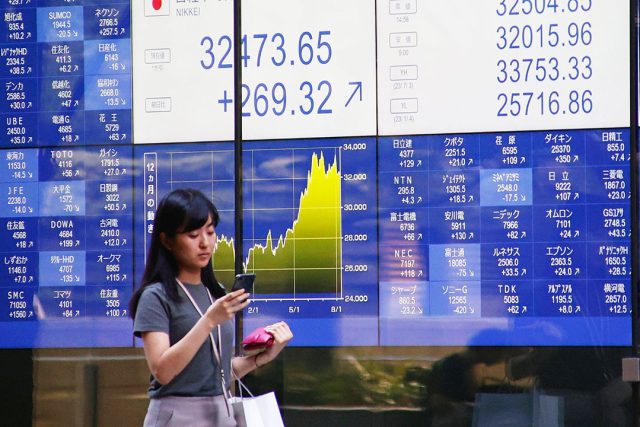From the corner of Fifth Avenue and 57th Street the facade of Tiffany’s looks just as it did in 1961 when Audrey Hepburn, dressed in a long black dress and pearls, nibbled on a croissant outside it. Inside, however, things are rather different. After a four-year, $500m renovation, shoppers are greeted by a more modern experience.
Everything shines: the rocks, the metal and marble display cases, the ceilings. What, at first glance, look like arched windows are really 7m-high LED screens showing a diamond bird flitting over Central Park. Lifts at the rear take shoppers to ten floors: one for silver, one for gold, one for “masterpieces”. A three-storey extension, with views over Fifth Avenue, now sits atop the building. These levels are appointment-only. “We call it the diamond on the roof,” quipped Alexandre Arnault, son of Bernard, who owns LVMH, a French conglomerate that bought Tiffany’s in 2021.
It is the most glittering example of a luxury trend: huge bets on retail properties. LVMH has bought on Bond Street in London and the Champs-Elysées in Paris. There has been a flurry of deals on New York’s Fifth Avenue. In December Prada purchased its current store, 724 Fifth, and nabbed 720 Fifth, the shop next door, for a total of $835m. On January 22nd Kering, which owns Gucci, announced that it had bought the retail space in 715-717 Fifth for $963m. LVMH is rumoured to be eyeing up 745 Fifth, the space next to Louis Vuitton.
These deals are being sorted at breakneck speeds and for record prices. From a handshake to completion, some come together in weeks. The Kering and Prada purchases were, unusually, both “sign and close” deals—entire cash payments were made on the day the contracts were signed. The Kering deal is America’s largest ever high-street retail-property deal.
Why the rush? Tiffany has owned 727 Fifth for decades, but most brands have been happy to lease. Will Silverman of Eastdil Secured, an investment bank that advised Jeff Sutton, the developer who sold to both Kering and Prada, points to growth in luxury sales and shifts in interest rates to explain the change of approach.
High-end goods began to fly off the shelves during the covid-19 pandemic, when people where flush with cash and had nowhere to go, and the frenzy has not abated since. Beautiful handbags that were once the privilege of the few are now bought by the many. Indeed, last year LVMH’s sales of fashion and leather goods were 40% higher than in 2021.
Luxury goods still tend to be sold in person, meaning that retailers are spending eye-watering sums to tempt people into their stores. And the arrival of the masses means they need more space for plush private rooms in which to make sales to their old clientele. “Manhattan might be getting taller,” notes Mr Silverman, “but it’s not getting any wider.” There is a finite amount of truly high-end space.
Alone this might be enough to tempt retailers to purchase rather than rent—and buying becomes the clear choice once interest rates are taken into account. Most property owners finance their buildings using a mixture of equity and mortgage debt. In America mortgage rates on commercial buildings are around 6-7%. The cost of equity is higher still. For an investor to buy a space and cover his costs, he might need to charge annual rent worth perhaps 8% of the building’s value.
Paying these rates would be foolish for a luxury firm. Since they make so much money, they can issue debt at a yield only slightly above that on German government debt. LVMH’s most recent bonds were oversubscribed at 3.5%. Thus fancy retail spaces are a luxury it can easily afford. ■
For more expert analysis of the biggest stories in economics, finance and markets, sign up to Money Talks, our weekly subscriber-only newsletter.




The Most Read
Сryptocurrencies
Bitcoin and Altcoins Trading Near Make-or-Break Levels
Financial crimes
Thieves targeted crypto execs and threatened their families in wide-ranging scheme
Financial crimes
Visa Warning: Hackers Ramp Up Card Stealing Attacks At Gas Stations
News
Capitalism is having an identity crisis – but it is still the best system
Uncategorized
The 73-year-old Vietnamese refugee is responsible for bringing Sriracha to American consumers
Uncategorized
Electric Truckmaker Rivian, Backed By Amazon, Ford, Raises Whopping $1.3 Billion